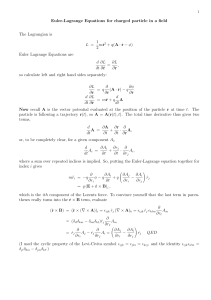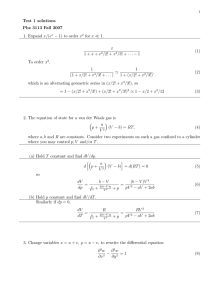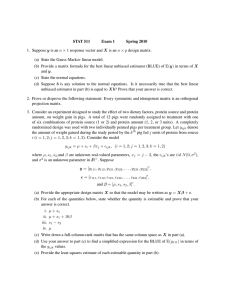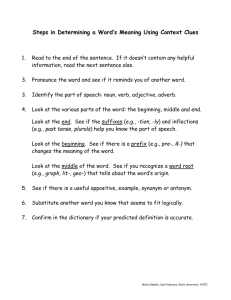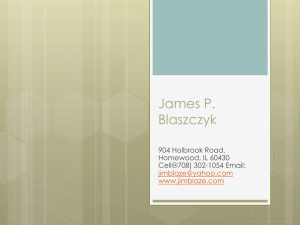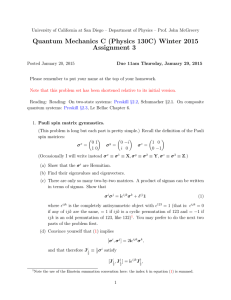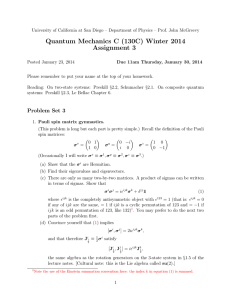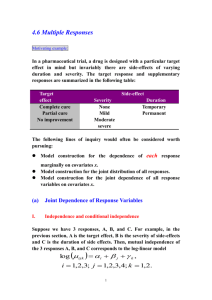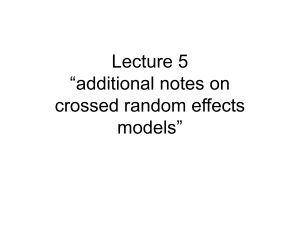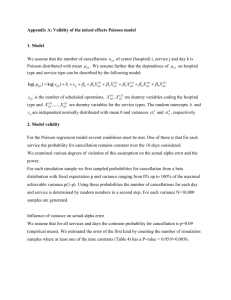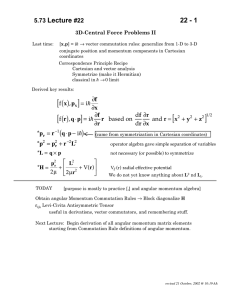Tutorial 2
advertisement
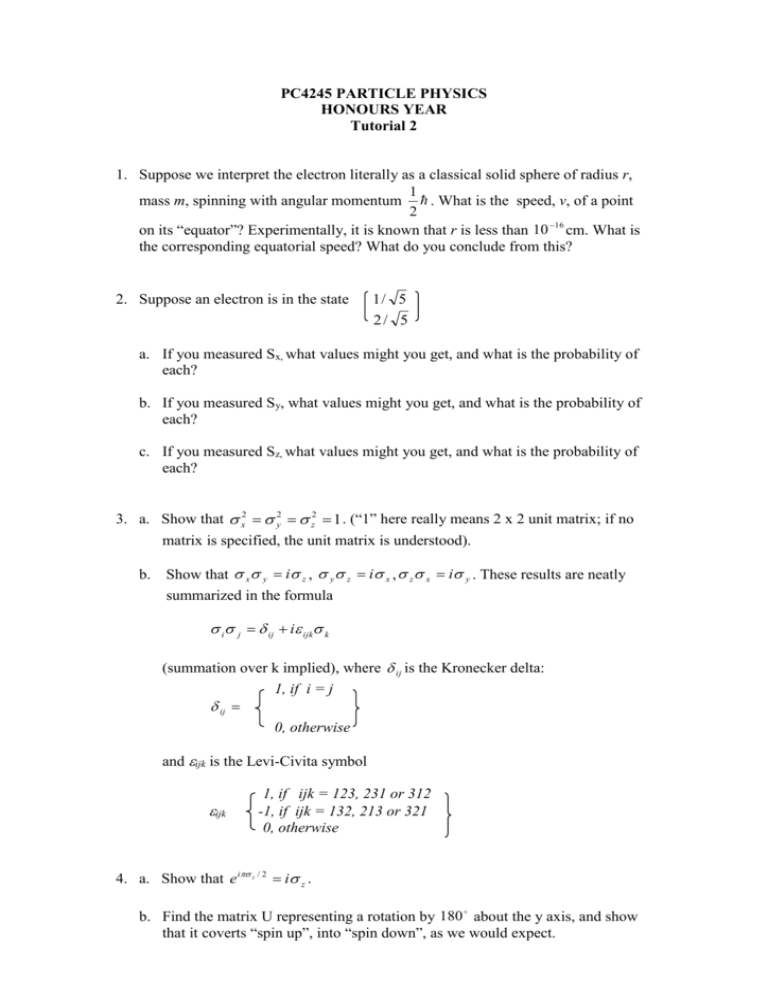
PC4245 PARTICLE PHYSICS HONOURS YEAR Tutorial 2 1. Suppose we interpret the electron literally as a classical solid sphere of radius r, 1 mass m, spinning with angular momentum . What is the speed, v, of a point 2 on its “equator”? Experimentally, it is known that r is less than 10 16 cm. What is the corresponding equatorial speed? What do you conclude from this? 2. Suppose an electron is in the state 1/ 5 2/ 5 a. If you measured Sx, what values might you get, and what is the probability of each? b. If you measured Sy, what values might you get, and what is the probability of each? c. If you measured Sz, what values might you get, and what is the probability of each? 3. a. Show that x2 y2 z2 1 . (“1” here really means 2 x 2 unit matrix; if no matrix is specified, the unit matrix is understood). b. Show that x y i z , y z i x , z x i y . These results are neatly summarized in the formula i j ij i ijk k (summation over k implied), where ij is the Kronecker delta: 1, if i = j ij 0, otherwise and ijk is the Levi-Civita symbol ijk 1, if ijk = 123, 231 or 312 -1, if ijk = 132, 213 or 321 0, otherwise 4. a. Show that e i z / 2 i z . b. Find the matrix U representing a rotation by 180 about the y axis, and show that it coverts “spin up”, into “spin down”, as we would expect. c. More generally, show that U ( ) exp( i / 2) cos ~ ~ 2 i ( ) sin ~ 2 ~ where is the magnitude of , and / ~ ~ ~ 5. The * can decay into , 0 0 , or . Suppose you observed 100 such disintegrations, how many would you expect to see of each type ? 0 6. Consider pion-nucleon scattering, N N. There are six elastic processes: (a) p p (c) p p (e) 0 n 0 n (b) 0 p 0 p (d) n n (f) n n and four charge-exchange processes: (h) 0 p n (j) p 0 n (g) n 0 p (i) 0 n p Since the pion carries I = 1, and the nucleon I = 12 , the total isospin can be 32 or So there are just two distinct amplitudes here: 3, for I = 32 , and 1, for I = 12 . From the Clebsch-Gordan tables we find the following decompositions: p : 11 1 1 2 2 0 p : 10 1 1 2 2 2/3 p : 1 1 1 1 2 2 3 3 2 2 (1/ 3) 3 1 2 2 (1/ 3) 3 2 1 1 2 2 12 2 / 3 n : 11 1 2 12 (1/ 3) 3 1 2 2 0 n : 10 1 2 12 2 / 3 12 (1/ 3) n : 1 1 1 2 Reactions (a) and (f) are pure I = a = f = 3 12 3 2 3 2 3 2 2/3 1 2 12 1 1 2 2 1 2 12 23 : (1) 1 2 . The others are all mixtures: for example c = 1 3 3 + 2 3 1 , j = ( 2 / 3) 3 - ( 2 / 3) 1 (2) The cross sections, then, stand in the ratio a : c : j 9|3 | 2 : |3 + 21| 2 : 2|3 - 1| 2 (3) At a CM energy of 1232 MeV there occurs a famous and dramatic bump in pion-nucleon scattering, first discovered by Fermi in 1951; here the pion and nucleon join to form a short-lived “resonance” state the . We know the carries I = 32 , so we expect that at this energy 3 »1, and hence a : c : j 9 :1: 2 (4) (i) Referring to equations (1) and (2), work out all the N scattering amplitudes, a through j, in terms of 1 and 3. (ii) Generalize equation (3) to include all 10 cross sections. (iii) In the same way, generalize equation (4).
